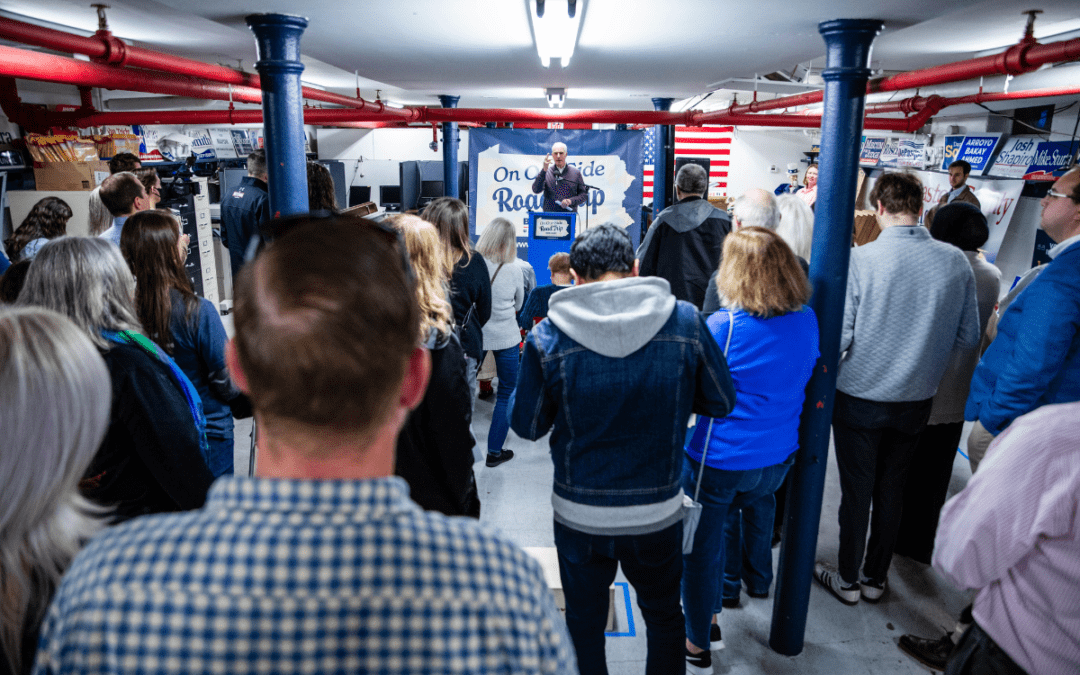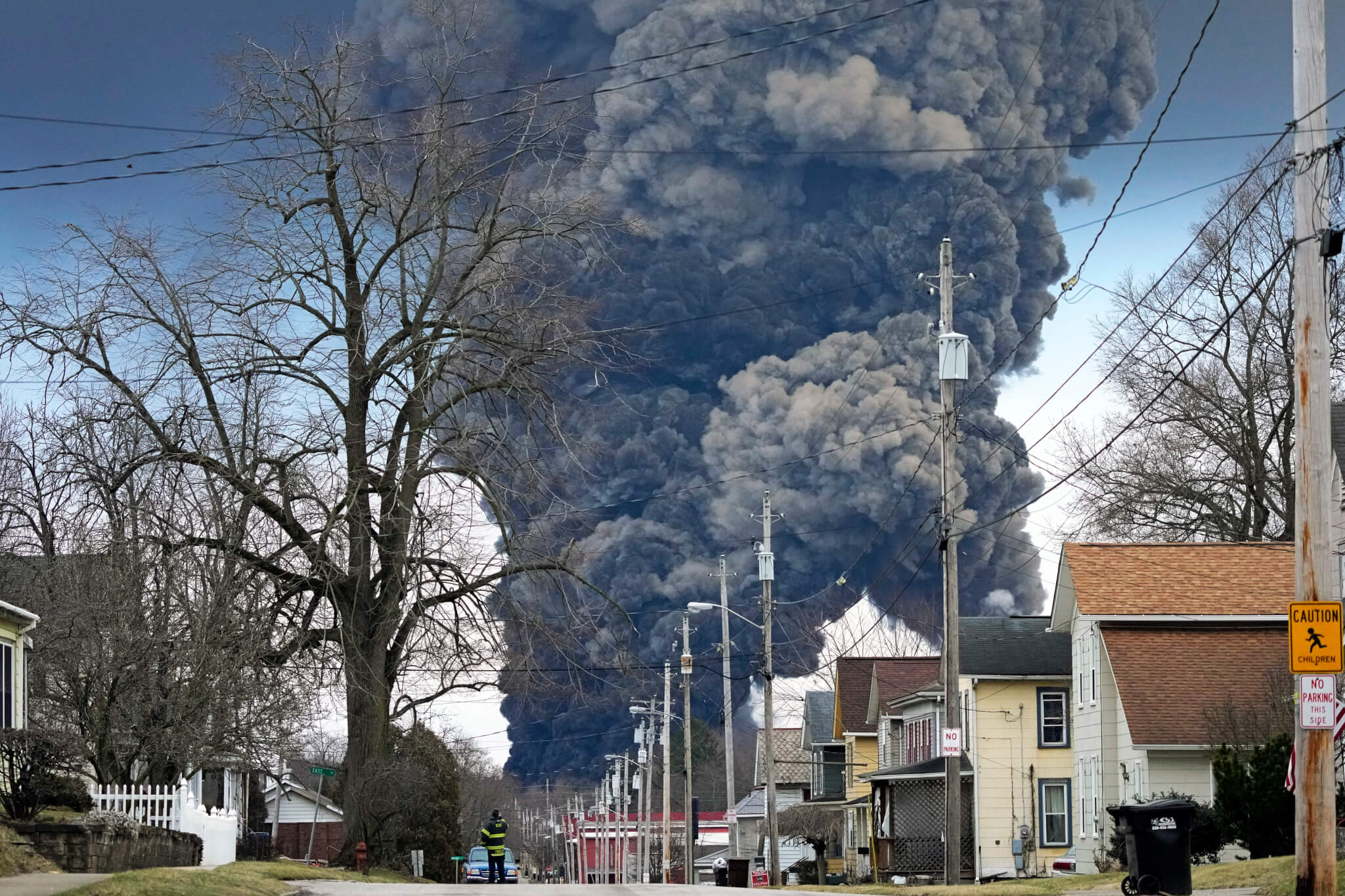
Shown is a farm in in Lebanon, Pa., on May 12, 2020. (AP Photo/Matt Rourke)
Rural areas of Pennsylvania have seen a tremendous spike in coronavirus cases and COVID-19 deaths since October, pushing numbers far higher than in urban areas.
The coronavirus pandemic has infiltrated every corner of Pennsylvania. No demographic in the commonwealth is safe from its reach.
It is the rural parts of the state where the coronavirus seems to be spreading the fastest in this second wave. Incidence rates and mortality rates have surged in the past month, ravaging areas that are ill-equipped to handle it.
Rural hospitals face significant financial challenges and operational limitations. Issues already prevalent in rural communities, such as social determinants, chronic diseases, lack of access to care and a large elderly population, have served as fuel to the pandemic fire.
“Conditions in rural Pennsylvania are ripe for the virus to spread,” said Dr. Rutul Dalal, Medical Director of Infectious Diseases at UPMC in the Susquehanna Region. “These communities do not have the human personnel or resources to fight this pandemic. Rural areas are feeling the strain.”
What Parts of Pennsylvania are Considered Rural?

An area is defined as rural based on population density, which is calculated by dividing the total population of a specific area by the total number of square land miles of that area, according to The Center for Rural Pennsylvania.
In Pennsylvania, a county is considered rural when the number of people per square mile is less than 284.
Out of the 67 counties in the Commonwealth, 48 are rural. Nearly 3.4 million residents, or 26% of the state’s population, call these counties home.
Some counties many consider rural, such as York and Lancaster, are not actually rural because of their population density. For example, Lancaster has a population density of 550 and York’s is 481, both well over the rural threshold.
COVID-19 in Rural PA

The initial outbreak of the coronavirus in the spring was mostly centered in Philadelphia and surrounding urban areas. There was little spread of the virus in rural counties.
But the fall resurgence of the virus saw climbing numbers of cases in rural communities, with incidence rates and mortality rates in rural counties surpassing those in urban areas.
“Because the rural communities weren’t hit that hard in the initial spread of the virus, people started to feel a sense of safety, they let their guards down,” Dalal said.
The numbers tell a dramatically different story now.
“Temperatures are going down. People are going indoors. Schools are back in session. People are gathering for holidays,” Dalal said. “It’s ideal conditions for the virus to spread.”
Incidence Rates Are Higher in Rural PA

Of the more than 500,000 confirmed coronavirus cases in Pennsylvania since March, 251,884 were recorded from Oct. 1 to Dec. 4. Of those, 81,586 (or 32%) were recorded in rural counties.
Rural counties make up just 26.5% of Pennsylvania’s population.
From Dec. 4 to 10, 26 rural counties reported an incidence rate (cases per 100,000 residents) higher than the state average of 471.7. Mifflin County in central Pennsylvania had the highest incidence rate at 1,200. That means 1.2% of the population had the virus. Mifflin is followed closely by Crawford County, in the northwestern corner of the state, just south of Erie County, which has an incidence rate of 1,170.9 or 1.17%.
In comparison, only 10 urban counties have an incidence rate higher than the state average, with Northampton County, where Bethlehem and Easton are located, reporting the highest of 584—less than half as much as Mifflin County.
Mortality Rates Are Higher in Rural PA

Since Oct. 1, rural coronavirus deaths account for 2,214 of the 3,902 reported statewide (about 57%).
Fifteen counties have a mortality rate (deaths per 100,000 residents) higher than 50: Mifflin (149.28), Huntingdon (135.05), Bedford (116.24), Schuylkill (102.06), Northumberland (99.91), Cambria (95.65), Wyoming (77.65), Lawrence (73.1), Juniata (72.86), Indiana (72.86), Franklin (68.46), Bradford (65.75), Blair (64.49), Montour (60.31), and Potter (54.15). All 15 are considered rural.
Only two urban counties have a mortality rate higher than 50: Westmoreland (63.6) and Cumberland (51.71). Westmoreland County is part of the Pittsburgh suburbs and Cumberland County includes the Carlisle-Harrisburg metropolitan area.
Politics

Bob Casey: Past time to reign in corporations ‘jacking up their prices’
US Sen Bob Casey continued calling out corporate greed and price gouging at a canvass launch in the City of Lancaster on Sunday. Maintaining the...

Susan Wild calls out Republicans for holding up Ukraine aid
‘It’s not only shameful, but embarassing.” That’s what US Rep. Susan Wild (D-Pennsylvania) had to say about the Republican-led US House’s...

He said what? 10 things to know about RFK Jr.
The Kennedy family has long been considered “Democratic royalty.” But Robert F. Kennedy, Jr.—son of Robert F. Kennedy, who was assassinated while...
Local News

Conjoined twins from Berks County die at age 62
Conjoined twins Lori and George Schappell, who pursued separate careers, interests and relationships during lives that defied medical expectations,...

Railroad agrees to $600 million settlement for fiery Ohio derailment, residents fear it’s not enough
Norfolk Southern has agreed to pay $600 million in a class-action lawsuit settlement for a fiery train derailment in February 2023 in eastern Ohio,...






